
On Wednesday 24 January Sven van Hasselt was imprisoned for five years and his wife Natasha Simpkins received a two year suspended sentence. Sven and Natasha were arrested in July 2012 while living in Amsterdam in a joint operation by the National Domestic Extremism and Disorder Intelligence Unit and Dutch police. The same day Debbie Vincent was also raided. All three were charged with conspiracy to blackmail Huntingdon Life Sciences (HLS), the notorious animal research laboratory.
Debbie, Sven & Natasha were part of Stop Huntingdon Animal Cruelty. SHAC was launched in November 1999 with the aim of closing HLS within three years. In March the same year the National Public Order Intelligence Unit (NPOIU) was born with a remit to spy on and monitor animal rights, green and left wing groups. It incorporated the Animal Rights Index, set up by Special Branch in 1986 as a police intelligence gathering unit, but with no operational role.
According to Rob Evans and Paul Lewis in their book Undercover: the true story of Britain’s political police, this led to an “unprecedented increase in the undercover infiltration of political activists.” Top of the list of groups targeted would have been SHAC, the leaders of which were already well known to the state. Husband and wife Greg Avery and Heather Nicholson had spearheaded successful campaigns against two laboratory animal breeders, Consort Beagles and Hillgrove Cats.
The SDS: Dave Evans
There is no confirmed NPOIU activity within SHAC during the group’s early years. Many of its demonstrations were against financial institutions in the City of London and close links were forged with London Animal Action. Greg and Heather turned up to most of LAA’s meetings and minibuses and coaches went from London to HLS’ site, just off the A14. There was at least one spycop in LAA at this point who called himself Dave Evans. He was deployed by the Special Demonstrations Squad, based at Scotland Yard, and went to most of the group’s events, including planning meetings held in its office. He also attended many demonstrations, among them ones against HLS. In 2001 SHAC held a huge mobile action against some of HLS’ main customers. LAA hired four minibuses to take people there and Evans was one of the drivers. Evans’ deployment appears to have finished at the 2005 Animal Rights Gathering in Kent, where SHAC had a significant presence.
The NPOIU: Rod Richardson and Ritchie Clarke
In January 2001 HLS nearly collapsed and had to be rescued from bankruptcy by the last minute intervention of Lord Sainsbury, Labour minister for science. The government was also required to offer banking and insurance services to ensure the company’s survival, such was the effectiveness of SHAC. Other campaigns sprung up as well, including one targeting a proposed laboratory in Cambridge that was successful.
In the eyes of the state, forestalling this momentum was essential to the future of the highly profitable pharmaceutical, chemical and biotech sectors. Brian Gunn, chief constable of Cambridgeshire Police, told a BBC documentary called True Spies in 2002 that: “If HLS was to fail and be brought down by animal extremists they would merely move on to another organisation. The domino effect that this would have on the pharmaceutical industry, the biochemical industry, its customers, its finance stakeholders, etc, would be serious concern for government in terms of economic stability.”
In 2004 the National Extremism Tactical Coordination Unit was set up to coordinate a national response to what was dubbed “animal rights extremism” and the National Domestic Extremism Team formed primarily to investigate SHAC through Operation Forton, which involved five police forces at a cost of several million pounds. The third prong in the state’s attack was the NPOIU which, until then, had failed to plant an undercover into the SHAC hierarchy.
Rod Richardson, the alias used by an NPOIU agent from 1999-2003, had been to protests against one of HLS’ customers Yanamouchi in Oxford but he mainly targeted environmental and anti-capitalist groups.
Ritchie Clarke was the alias used by a NPOIU spy who lived in Bedford and was part of the local group there. Clarke was a local contact for SHAC and he drove vehicles as part of its days of action, including “home visits” to targets. He also took part in a “SHAC tour” against pharmaceuticals and other anti-vivisection targets in Germany. But he mainly spied on campaigns against new laboratories in Cambridge and Oxford and was not a trusted member of the SHAC inner circleIn 2006 he allegedly moved to Norway to live with his girlfriend.
Adrian Radford
What NPOIU needed was a spy entrenched within the group yet that proved difficult due to the way it was run, with a handful of trusted activists directing the operation from a cottage in Hampshire. It wasn’t till the second half of 2004 that the infiltration of SHAC at that level was finally secured.
Adrian Radford, using the alias Ian Farmer, began his deployment at the Animal Rights Gathering in Kent in September 2004. Prior to that he had spied on groups campaigning for gay rights. Extrovert and likeable, Radford was quickly accepted in the movement and became a close friend of Greg’s new wife, Natasha Avery. He was known for wearing a beagle costume at demonstrations but in order to gain access to the inner workings of SHAC, he feigned suffering from cancer and was thus allowed to work at the group’s headquarters.
Radford later said in an interview with the Sunday Times that at this point he was asked “to offer his services to the police and was released from his government work to do this.” He claims he “reported on every detail of its activities to the police” and met his police handlers daily to give them “detailed information on hardcore extremists,” including dozens of documents he was supposed to have burned, or showing them notes of conversations he had written on his body.
To remain credible, Radford alleges he took part in direct action. His profile on the website Powerbase says Radford claimed he:
- participated in three attacks of the homes of individuals, including using his car to drive two animal liberation activists to attack the cars and the house of a business executive in Surrey;
- took part in an night-time raid on a farm in November 2004, and claimed to have liberated hundreds of ducks(in reality he only took nine chickens after being disturbed by the farmer who wielded a shot-gun);
- purchased paint-stripper and paint from a DIY store in Croydon using SHAC stall money;
- scuppered several attacks, including one against Lord Sainsbury in Buckinghamshire, where activists were seeking to paint-bomb his car.
- claimed that after he learned there was to be an incendiary device attack against a haulage depot belonging to chemical supply company BOC, he scuppered the action by volunteering to do it by himself, as a way of proving himself. In his unverified account he purchased an old car, used paint stripper and paint on it, and claimed it was a vehicle belonging to one of BOC’s staff;
- was involved in an attack on five houses connected to suppliers/clients of Huntingdon Life Sciences, which took place several months after the chicken liberation;
- was present at a meeting where lists of targets were drawn up for circulation to activist cells and provided information on how the Animal Liberation Front organised;
- would divert blame onto others where he had helped sabotage actions, and denigrating them
Radford claimed his infiltration came to an end in January 2007: ‘The extraction strategy was to have him placed under surveillance so that he would appear to be compromised, and panicked into leaving.” The Operation Achilles raids four months later saw 32 activists arrested, thirteen of whom were later gaoled.
During the SHAC trials no mention was made of Radford. He claimed the police used his intelligence to generate leads and evidence able to stand independently of him, thus protecting him as a source. In an interview with the Dutch national television news NOS, he stated: ‘The information that I got, as far as I’m aware, has never been directly used as evidence in any of the court cases whatsoever’.
It is difficult to test the credibility of all Radford’s claims as the leading figures in SHAC during his deployment – Greg Avery, Nastasha Avery and Heather Nicholson – have never commented on them. But four core participants in the Undercover Policing Public Inquiry from SHAC say Radford was one of a number of police spies and “no disclosure was made at the time of trial of any participation by undercover officers.”
Novartis and “James Adams”
Following the sentencing of 13 of its activists in 2009 and 2010, the state believed SHAC would quickly fall apart. Instead, however, more volunteers came forward. Debbie Vincent took over as the group’s coordinator and quickly found herself embroiled in time consuming court cases resulting from injunctions taken out by multinationals such as AstraZeneca and Novartis who had business relationships with HLS.
In 2008 and 2009 actions were carried out in France, Belgium, Germany and Switzerland against Novartis and other companies who were HLS’ customers. These included setting fire to directors’ cars, company buildings and, in one case, the holiday hunting lodge of Daniel Vasella, Director of Novartis. Graffiti was daubed on directors’ homes overnight and the ashes of Vasella’s mother were stolen from the family mausoleum . These attacks were not carried out by SHAC but by independent groups such as Militant Forces Against Huntingdon Life Sciences.
Debbie was not directly linked to any of these actions but as the public face of SHAC she came under scrutiny. After sending an email to Novartis she was invited to a meeting with Andrew Jackson, Global Head of Corporate Security at Novartis, in London. She took another activist, Max Gastone, who was an expert in fighting injunctions with the intention of reaching a compromise with the company over its injunction.
In the article on its website, “If you don’t fight you’ve already lost”, Corporate Watch explained what happened next.
Unknown to them, the company had arranged with the police to bug the meeting, and one of the people they were due to meet was an undercover officer, using the alias “James Adams”, who was masquerading as a Special Contracts Manager for Novartis. The activists were swept for bugs at the beginning of the meeting and each time they went to the toilet. They were told that the meetings were strictly confidential. After the meeting Adams got in touch with SHAC again and said that “certain things are outside the parameters of the dialogue” and asked Debbie and Max to set up another meeting, encouraging them to communicate with him via PGP email encryption. “Adams” was eager to communicate directly with Debbie and Max rather than through the campaign. The clear intention was to coax the activists into offering to secure the return of the Vasella remains.
Debbie made it clear she had no idea who took the remains. Adams took the initiative in the conversations and according to Debbie he “asked leading questions about whether we were the right people” to talk to. Debbie’s own notes of the meeting record her as saying: “We’re taking a risk the way the legal system is in this country to meet with you… (and) are painfully aware that going to these meeting with Novartis puts us in the spotlight, puts us at risk…”
Shortly afterwards Debbie bumped into Adams on the underground. It seemed like coincidence but he had followed her. He once more brought up the issue of the Vasella remains but Debbie refused to comment. In July 2012 Debbie, Sven and Natasha were arrested on the same day and charged with conspiracy to blackmail. At Debbie’s trial in Winchester two years later evidence was introduced from the meetings with Novartis and the truth about James Adams was revealed to the defence only at the last moment. Despite this the judge ruled the evidence admissible and it formed an important plank in the case against her, ultimately leading to her conviction.
Gary Rayner
The prosecution also sought to link Debbie with Sven and Natasha and one of their main pieces of evidence was a photo of them together at an International Animal Rights Gathering in Norway in 2009. It is thought that the photo could have been taken by an agent using the alias Gary Rayner. Rayner appeared in 2006 and was the replacement for Ritchie Clark. Early in his deployment he had a partner named Abigail who is also thought to have been an undercover police officer.
Rayner’s target was almost exclusively Speak, the campaign against the building of an animal research laboratory by Oxford University, and he was friends with the group’s leader, Mel Broughton, later sentenced to 10 years for conspiracy to commit arson. However he did travel to the 2009 Gathering and, according to his Powerbase profile, “he was spending time with Debbie Vincent volunteering at one point to help her with the washing up.”
The prosecution’s case against Debbie refers to an “officer deployed” at the Gathering seeing her with Sven & Natasha and “ends with a reference to an exhibit, [SP108], which is thought to be the photograph. At the time it was not realised that this officer is likely to have been referring to an undercover officer who had attended with other UK activists, as any person not well-known to other British activists would have rapidly stood out.”
Debbie was convicted and sentenced to six years in 2014. Sven and Natasha were on bail for several years while they faced charges relating to liberation of mink from a fur farm. Finally they were extradited to the UK in January 2017 to stand trial. In the end they chose a plea bargain to minimise their punishment. Had they gone not guilty and been convicted, they would have faced much heavier sentences.
Conclusion
In its 15 year history SHAC was kept under constant surveillance and infiltration by the state. The spycops in this article probably represent the tip of an iceberg. With that in mind the group is surprisingly under-represented in terms of the Undercover Policing Public Inquiry. There are just four core participants. Sven and Natasha wanted CP status but were not given it by the chairman of the Inquiry, Christopher Pitchford, in 2015 because they were still in the Netherlands awaiting extradition. Earlier this month his successor John Mitting ruled that they did not qualify. None of the three leading figures in the group have applied to join the Inquiry, nor made any public statement on SHAC or the repression it suffered since their release from prison.
The case of SHAC is a textbook example of how a radical organisation whose aims threatened vested interests came under attack, overtly in the form of harsh repressive laws and covertly with the use of bugs, monitoring and spies. As of 2018 there are no organisations operating according to the SHAC model anywhere in the world. Anti-vivisection campaigning as a whole has diminished significantly and the animal rights movement gone off in a different direction.
Please write letters of support to Sven
Sven van Hasselt A3021ED, HMP Winchester, Romsey Road, Winchester SO22 5DF.
Further reading
To find profiles of Rod Richardson, Ritchie Clarke (“RC”), Adrian Radford and Gary Rayner (Gary R and Abigail L) go to the Undercover Research Group portal on Powerbase: http://powerbase.info/index.php/UndercoverResearch_Portal
An analysis of Debbie Vincent, Novartis and James Adams by Corporate Watch: https://corporatewatch.org/if-you-dont-fight-youve-already-lost/
An analysis of SHAC from the sister blog to ARspycatcher: https://network23.org/redblackgreen/2014/08/29/the-end-of-shac-and-what-we-can-learn-from-it/
Sven and Natasha’s support group: http://www.freesvenandnatasha.org
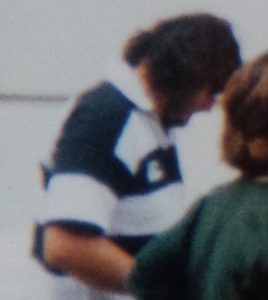
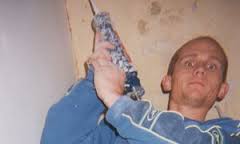
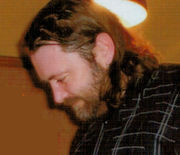
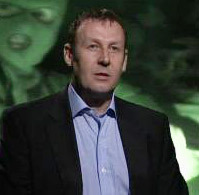
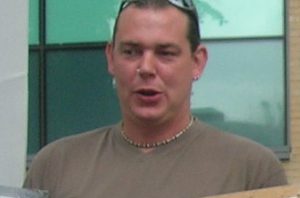
Leave a Reply